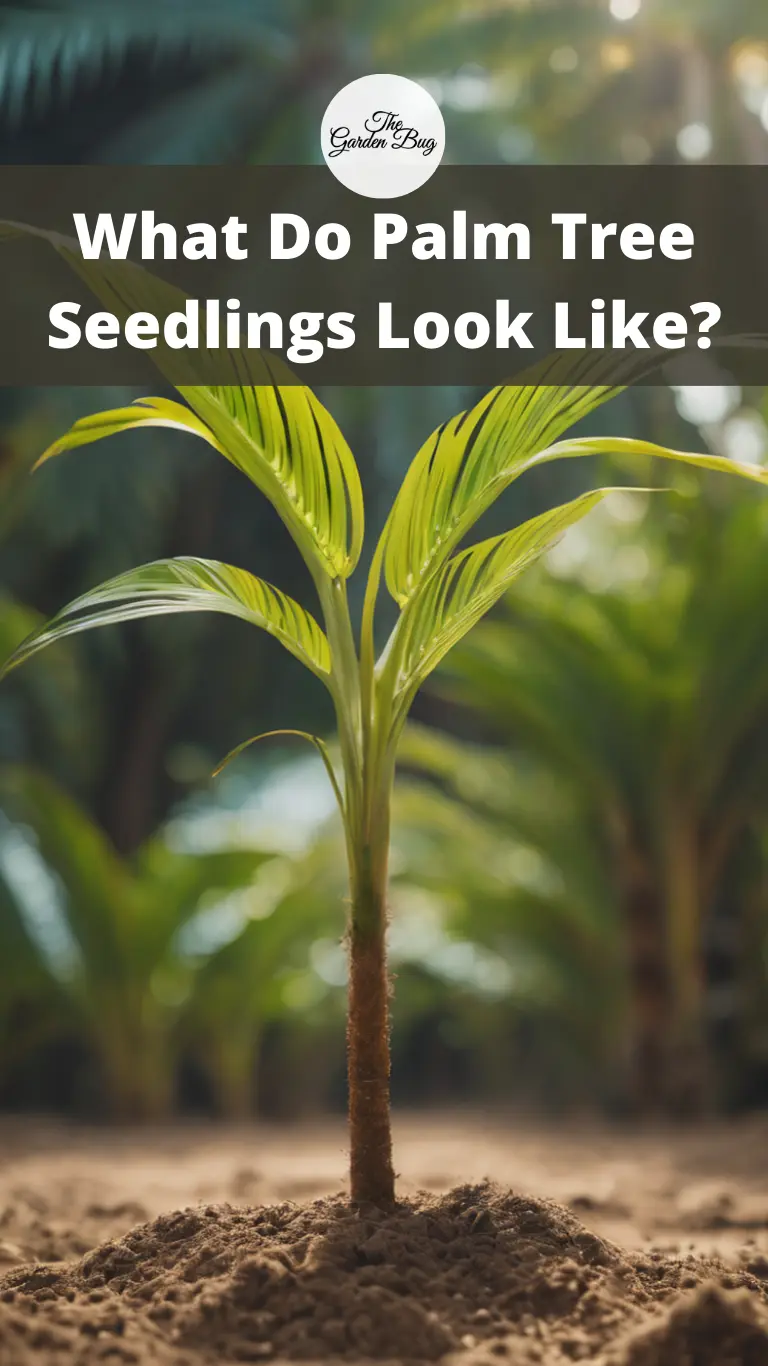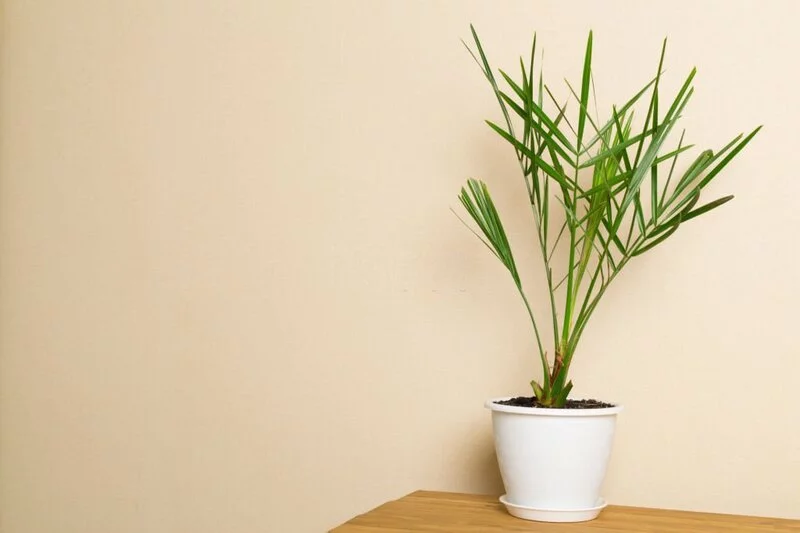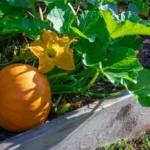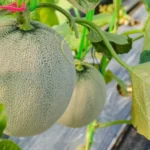Hello there, green thumbs! Ever wonder what those little shoots sprouting up in your garden are? Could they be palm tree seedlings? If you’re living in a tropical or subtropical region or if you’ve got a thing for exotic indoor plants, that might just be the case! In this article, we’ll dive into the fascinating world of palm tree seedlings and find out how to identify them.
Palm Tree Seedlings
Now, let’s get to know our mini palm trees better! Palm tree seedlings, like most plants, begin life as a seed. Once germinated, the seed gives way to a small sprout or seedling, which can be distinguished by its bright green color and unique structure.
The baby palm initially shows itself as a green shoot, often covered by the seed or fruit it emerged from. As it grows, it begins to develop its first leaves, known as cotyledons. These leaves might not resemble the fronds we associate with adult palms, but rest assured, this is the humble beginning of a mighty palm tree!
The seedling’s stem is typically thin and flexible, and the roots may just begin to anchor themselves in the soil. From these small beginnings, the palm seedling will eventually grow into a towering tree with broad, sweeping fronds and a thick, sturdy trunk. But for now, it’s just a tiny, hopeful sprout.
Keep reading as we go further to help you distinguish palm seedlings from other seedlings, and give you more specifics about their growth and appearance!
Distinguishing Palm Tree Seedlings from Other Seedlings
Alright, time to dive deeper! So, how do you tell a palm tree seedling from other seedlings? After all, a lot of seedlings kind of look the same when they first sprout, don’t they?
Well, the first sign is usually in the seed. If you spot a large, fleshy seed or fruit—usually brown or black—you might just have a palm tree on your hands. Palm seeds are quite larger than those of most other common plants.
Next up, the leaves. As the palm seedling begins to mature, it’ll sprout what are known as ‘pinnate’ or ‘palmate’ leaves—these are the classic, fan-like fronds we associate with palm trees. They’re quite different from the leaves of most other plants, which can help you identify a palm seedling early on.
Progression of Palm Tree Seedling Growth
Now, let’s talk about how palm tree seedlings grow up. In their early stages, the seedlings sprout a few small leaves. As they get older, these leaves will start to take on the shape of adult palm fronds.
Palm seedlings go through a bit of an ‘ugly duckling’ phase before they start to look like the elegant trees we know and love. They might look a bit odd at first with a single stem and few leaves, but over time they’ll develop a thick trunk and a crown of beautiful, sweeping fronds.
This whole process can take a few years, so don’t worry if your palm seedling doesn’t look like a miniature palm tree right away! It’s just taking its time to grow into its majestic form.
Remember, patience is a virtue, especially in gardening! In the next sections, we’ll give you tips on how to take care of these baby palms to ensure they grow big and strong!
- Miracle-Gro Shake ‘N Feed Palm Plant Food feeds palm plants for up to 3 months
- This plant food contains magnesium, iron, and manganese to grow lush palms, cycads, and tropical plants and to help prevent fronds from yellowing and curling
- Use with palm trees and plants, as well as cycad and tropical plants, in indoor or outdoor containers and in-ground gardens
- Apply to in-ground and established container plants by shaking evenly onto soil within the spread of the fronds and working into the top 1-3 inches of soil; water to start feeding
- Reapply Miracle-Gro Shake ‘N Feed Palm Plant Food every 3 months and water plants regularly for a beautiful garden all season long
Common Palm Tree Seedling Varieties and Their Features
Ok, so you’ve spotted a palm seedling in your garden. But with over 2,600 species of palms around the world, how do you know which one you’ve got?
Let’s talk about a few of the most common types you might encounter:
- Date Palm (Phoenix dactylifera): Young date palms have a spiky, pineapple-like look. As they mature, they develop grey, scale-like marks on their trunks and produce long, feathery leaves.
- Coconut Palm (Cocos nucifera): Coconut palms start life with a large, round seed (the coconut itself!). They sprout long, flat leaves from the center and will eventually grow a tall, slender trunk.
- Queen Palm (Syagrus romanzoffiana): Queen palm seedlings are recognized by their bright green, glossy, pinnate leaves. As they grow, they develop smooth, grey trunks.
- Sago Palm (Cycas revoluta): These aren’t true palms but are often mistaken for them. Sago palm seedlings are quite different, with a central stem that sprouts a rosette of glossy, dark green leaves.
Remember, these are just a few examples. Your little palm might not fit these descriptions perfectly, and that’s OK! With time and a bit of research, you’ll be able to identify it.
- LUSH, TROPICAL BEAUTY: Majesty Palms bring a touch of exotic beauty and a tropical vibe to any indoor or outdoor space. With their graceful fronds and tall stature, they create a statement and add a touch of luxury to your home, office, or room decor
- EASY TO CARE FOR: Despite their elegant appearance, Majesty Palms are relatively low maintenance plants. They thrive in bright indirect light but can tolerate lower light and require moderate watering, making them suitable for new and experienced owners
- 3-4 FEET TALL: Majesty Palms are quick to grow, allowing them to quickly fill a space and transform home or office decor immediately. They are popular choices for living rooms, offices, patios, or poolside areas, adding tropical ambiance anywhere
- READY TO GIFT: Majesty Palms make a thoughtful and unique gift for plant lovers, new home owners, nature enthusiasts, or anyone who appreciates the beauty of greenery. Durable and visually captivating, they stand out from a crowd of traditional gift options
- AIR-PURIFYING: In addition to its graceful tropic appeal, Majesty Palm is a live plant that may improve indoor air quality by filtering toxins and producing oxygen, promoting a healthier living environment
Conclusion
And there we have it—your handy guide to identifying palm tree seedlings! By looking out for those telltale signs like the large seed, unique leaf structure, and slow-growing trunk, you’ll be able to spot a baby palm in no time. So next time you see a peculiar seedling in your yard, take a closer look. It might just be the start of a tropical paradise! But remember, it’s all about patience. Sit back, relax, and watch as your little seedling grows into a towering, majestic palm tree.







